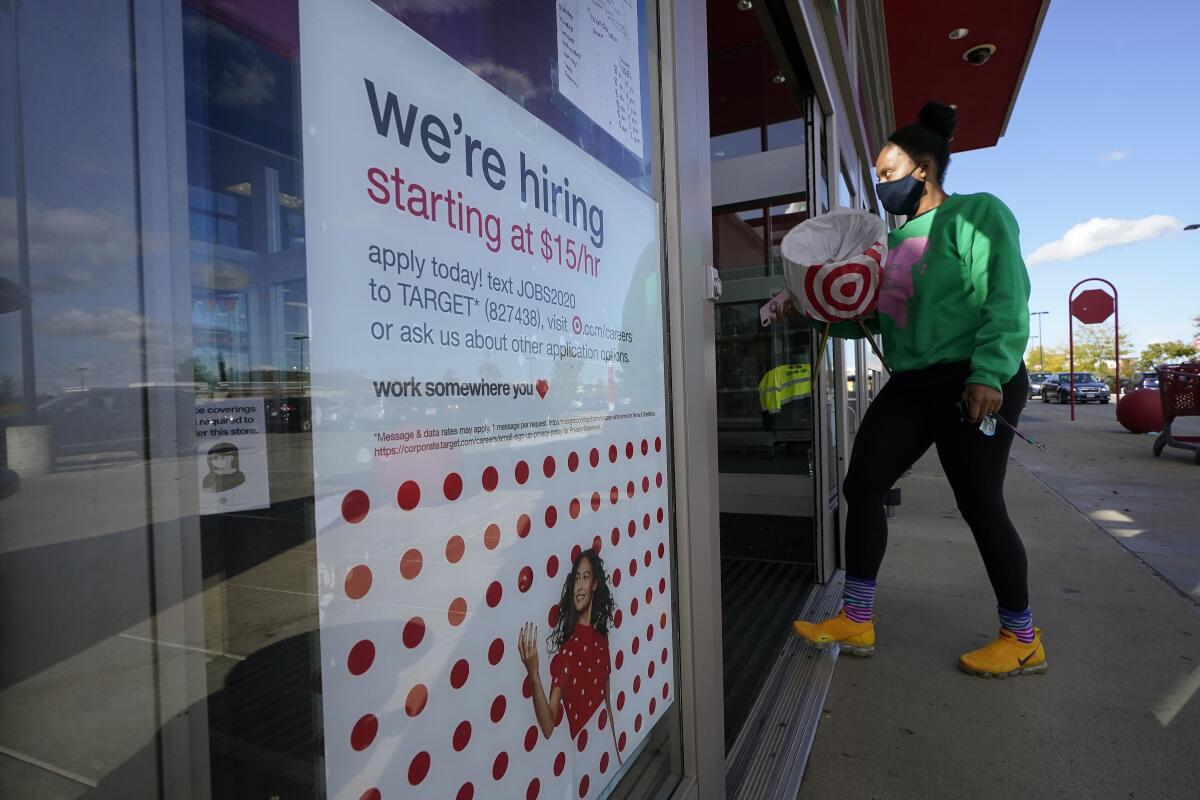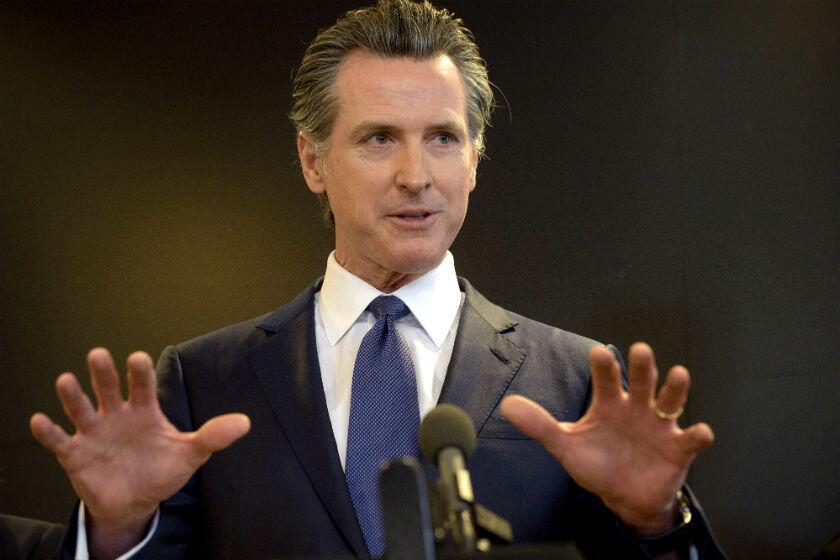Jump in hiring fuels optimism for U.S. economic recovery

- Share via
WASHINGTON — U.S. employers added a surprisingly robust 379,000 jobs last month in a sign the economy is strengthening as confirmed COVID-19 cases drop, vaccinations ramp up, Americans spend more and states ease business restrictions.
The February gain marked a sharp pickup from the 166,000 jobs added in January and the loss of 306,000 in December. Yet it represents just a fraction of the roughly 9.5 million jobs that the economy must regain to return to pre-pandemic levels.
Unemployment fell from 6.3% to 6.2%, the Labor Department reported Friday. That is down dramatically from 14.8% last April, just after the virus erupted in the United States. But it’s well above the pre-pandemic rate of 3.5%.
“The recovery really has some legs, some momentum now,” said Odeta Kushi, deputy chief economist at First American Financial Corp.
The strong jobs report, in suggesting the economy is on the mend, could complicate President Biden’s struggle to push through his $1.9-trillion COVID-19 relief package, which passed the House and is before the Senate.
It would provide, among other things, $1,400 checks to most adults, more money for weekly unemployment benefits and another round of aid to small businesses at a time when many Americans have seen their incomes shrivel and have fallen behind on rent, mortgages and other bills.
“We’re always happy to see positive jobs numbers,” Brian Deese, Biden’s top economic advisor, said on CNBC. “What you’re seeing is that we still have a long way to go.”
For one thing, about 4 million people who have lost jobs have stopped looking for work and so are not classified as unemployed. If those were included, along with a separate group that was misclassified as working, the unemployment rate would be 9.3%, according to Oxford Economics.
Still, one year after the pandemic triggered a sudden recession, economists are increasingly optimistic that hiring will accelerate in the coming months as Americans begin to once again travel, shop, attend sporting events, go to the movies and eat at restaurants.
Households as a whole have accumulated a huge pile of savings as Americans slashed their spending. Much of that is expected to be spent once people feel more comfortable about going out.
Last month’s job growth was driven by a steady recovery of bars, restaurants and hotels. Bars and restaurants added 286,000 jobs as business restrictions eased in California and other states. This week, Texas joined some other states in announcing it will fully reopen its economy.
Also hiring last month were retailers, which added 41,000 jobs, healthcare companies, with 46,000, and manufacturers, with 21,000. On the other hand, construction companies shed 61,000 jobs, most likely in part because of the severe storms and power outages in Texas. With demand for new housing strong, most analysts expect that figure will rebound strongly next month.
Stefan Coker, the owner of What’s Pop-In, a gourmet popcorn company in Buffalo, N.Y., said people seem increasingly comfortable with shopping in person. His online sales are also growing, and he hopes to strike a deal with the grocery chain Wegman’s to sell in those stores, he said.
To meet growing demand, he is moving into a larger storefront with warehouse space, and he plans to hire two or three more workers in the coming months.
“I’m seeing a major difference now in in-store sales,” Coker said. “Walk-in traffic has doubled. It’s been amazing to see.”
With the pandemic easing, he said, the company is also fielding more inquiries about custom bags for weddings and baby showers.
The virus has killed more than a half-million Americans. Deaths and new cases per day have plummeted over the last two months, though they are still running alarmingly high. The U.S. is averaging nearly 1,800 deaths and 62,000 newly confirmed infections per day.
The U.S. has administered more than 82 million COVID-19 vaccine doses, according to the Centers for Disease Control and Prevention. More than 21% of the nation’s adults have received at least one shot, and close to 11% have been fully vaccinated.
The job gains last month were sharply uneven. The unemployment rate among white people fell slightly, to 5.6%, and for Latinos, to 8.5%. But the jobless rate for Black Americans jumped from 9.2% to 9.9%,
Women fared slightly better than men in February, with unemployment among women dropping from 6.3% to 6.1%, while unemployment among men fell one-tenth of a percentage point to 6.3%. More women started looking for work, though millions of them have had to stop their job searches to care for children since the pandemic began.
One discouraging note in the February data is that the net job growth came entirely from people who reported that their layoffs had been temporary. By contrast, the number of people who said their jobs were permanently gone was largely unchanged from January.
With so much money being pumped into the economy, Oxford Economics forecasts that growth will reach 7% for all of 2021, which would be the fastest calendar-year expansion since 1984. The Congressional Budget Office projects that the nation will add a substantial 6.2 million jobs this year.
The wealthy state is failing many of its workers, a report commissioned by Gov. Gavin Newsom says, highlighting how California continues to grapple with a starkly unequal economy. It calls for “moonshot goals,” including guaranteed jobs for all Californians who want them.
Still, the size of the Biden relief package, coming as the economy is already showing improvement, has stoked fears that growth could overheat and accelerate inflation, possibly leading the Federal Reserve to jack up interest rates. Those fears have roiled financial markets for the last two weeks.
Federal Reserve Chairman Jerome H. Powell sought to assuage those concerns Thursday — without success, based on sharp sell-offs in the stock and bond markets — when he suggested that any meaningful rise in inflation would probably prove temporary and that the Fed would be in no hurry to raise its benchmark short-term rate.
Sounding an optimistic note, he said: “There’s good reason to expect job creation to pick up in the coming months.”
More to Read
Inside the business of entertainment
The Wide Shot brings you news, analysis and insights on everything from streaming wars to production — and what it all means for the future.
You may occasionally receive promotional content from the Los Angeles Times.











